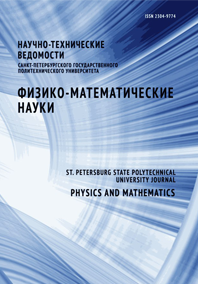Thermoactivational spectroscopy of the high impact polystyrene based composite films
The relaxation processes in the high impact polystyrene (HIPS) films filled with 2, 4, 6 vol.% of titanium dioxide (TiO2) of the rutile modification have been studied using the thermally stimulated depolarization current (TSDC) technique. Three relaxation processes were observed in the composite HIPS films. The first one (α-relaxation peak) appeared at about 93 °C and represented the glass transition. The second peak ρ was a high-temperature part of the first one and overlapped it. The ρ peak was caused by the release and subsequent motion of excess charges deposited during the electret preparation or the polarization process. The third peak appeared at about 150 °C and occurred only in the spectra of the composite films. The overlapping peaks were separated by the thermal cleaning technique. The subsequent application of the numerical methods (the Tikhonov regularization technique) allowed to determine the activation energy of the second process and to compare the obtained value with the corresponding data on the dielectric relaxation.


